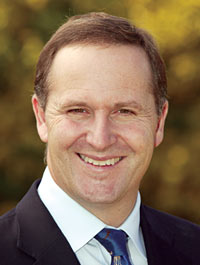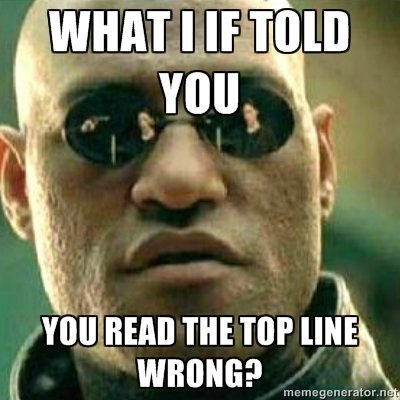Harmlessly passing your time in the grassland away
Only dimly aware of a certain unease in the air
You better watch out
There may be dogs about
I’ve looked over Jordan and I have seen
Things are not what they seem.What do you get for pretending the danger’s not real?
Meek and obedient you follow the leader
Down well trodden corridors into the valley of steel
What a surprise!
A look of terminal shock in your eyes
Now things are really what they seem
No, this is no bad dream.
All posts by Richard
You Are Living In a Computer Simulation
There are two fundamental worldviews that have currency today.
One I call Naturalism or the “bottom up” worldview. According to Naturalism, the world somehow got here by itself. It pulled itself up by its own bootstraps. From simple beginnings, complexity upon complexity emerged by processes of natural selection. 13.75 billion years later, here we are.
The other I call Supernaturalism or the “top down” worldview. According to Supernaturalism, the world is an artefact. Someone or something made it. It didn’t get here by itself. We may not know who or what created the world, or why, or, even, when. But we can look for clues.
The Christian worldview is a top down worldview. Today’s atheists have trouble giving any credence at all to such a worldview. “I just can’t bring myself to believe it,” is a common refrain.
Are You Living in a Computer Simulation? The significance of Nick Bostrom’s paper is this. It explains how it is possible, even overwhelmingly plausible, that the world is an artefact. And it does this by arguing from the secular humanist atheistic materialistic premises that today’s atheists all buy into.
Computer simulation? Divine creation? Call it what you will, but do please take seriously the possibility that the world you live in—and all it contains, including you—is an artefact.
Are You Living In a Computer Simulation?
Starting today, I’m going to be posting a series of classic philosophy papers. First up is Nick Bostrom’s Are You Living In a Computer Simulation? You can read it (and sections III, IV and V which I omitted) and several other related papers at Bostrom’s website, The Simulation Argument.
I. INTRODUCTION
II. THE ASSUMPTION OF SUBSTRATE-INDEPENDENCE
III. THE TECHNOLOGICAL LIMITS OF COMPUTATION
IV. THE CORE OF THE SIMULATION ARGUMENT
V. A BLAND INDIFFERENCE PRINCIPLE
VI. INTERPRETATION
VII. CONCLUSION
Are You Living In a Computer Simulation?ABSTRACT
This paper argues that at least one of the following propositions is true: (1) the human species is very likely to go extinct before reaching a “posthuman” stage; (2) any posthuman civilization is extremely unlikely to run a significant number of simulations of their evolutionary history (or variations thereof); (3) we are almost certainly living in a computer simulation. It follows that the belief that there is a significant chance that we will one day become posthumans who run ancestor-simulations is false, unless we are currently living in a simulation. A number of other consequences of this result are also discussed.
Many works of science fiction as well as some forecasts by serious technologists and futurologists predict that enormous amounts of computing power will be available in the future. Let us suppose for a moment that these predictions are correct. One thing that later generations might do with their super-powerful computers is run detailed simulations of their forebears or of people like their forebears. Because their computers would be so powerful, they could run a great many such simulations. Suppose that these simulated people are conscious (as they would be if the simulations were sufficiently fine-grained and if a certain quite widely accepted position in the philosophy of mind is correct). Then it could be the case that the vast majority of minds like ours do not belong to the original race but rather to people simulated by the advanced descendants of an original race. It is then possible to argue that, if this were the case, we would be rational to think that we are likely among the simulated minds rather than among the original biological ones. Therefore, if we don’t think that we are currently living in a computer simulation, we are not entitled to believe that we will have descendants who will run lots of such simulations of their forebears. That is the basic idea. The rest of this paper will spell it out more carefully.
Apart form the interest this thesis may hold for those who are engaged in futuristic speculation, there are also more purely theoretical rewards. The argument provides a stimulus for formulating some methodological and metaphysical questions, and it suggests naturalistic analogies to certain traditional religious conceptions, which some may find amusing or thought-provoking.
The structure of the paper is as follows. First, we formulate an assumption that we need to import from the philosophy of mind in order to get the argument started. Second, we consider some empirical reasons for thinking that running vastly many simulations of human minds would be within the capability of a future civilization that has developed many of those technologies that can already be shown to be compatible with known physical laws and engineering constraints. This part is not philosophically necessary but it provides an incentive for paying attention to the rest. Then follows the core of the argument, which makes use of some simple probability theory, and a section providing support for a weak indifference principle that the argument employs. Lastly, we discuss some interpretations of the disjunction, mentioned in the abstract, that forms the conclusion of the simulation argument.
II. THE ASSUMPTION OF SUBSTRATE-INDEPENDENCEA common assumption in the philosophy of mind is that of substrate-independence. The idea is that mental states can supervene on any of a broad class of physical substrates. Provided a system implements the right sort of computational structures and processes, it can be associated with conscious experiences. It is not an essential property of consciousness that it is implemented on carbon-based biological neural networks inside a cranium: silicon-based processors inside a computer could in principle do the trick as well.
Arguments for this thesis have been given in the literature, and although it is not entirely uncontroversial, we shall here take it as a given.
The argument we shall present does not, however, depend on any very strong version of functionalism or computationalism. For example, we need not assume that the thesis of substrate-independence is necessarily true (either analytically or metaphysically) – just that, in fact, a computer running a suitable program would be conscious. Moreover, we need not assume that in order to create a mind on a computer it would be sufficient to program it in such a way that it behaves like a human in all situations, including passing the Turing test etc. We need only the weaker assumption that it would suffice for the generation of subjective experiences that the computational processes of a human brain are structurally replicated in suitably fine-grained detail, such as on the level of individual synapses. This attenuated version of substrate-independence is quite widely accepted.
Neurotransmitters, nerve growth factors, and other chemicals that are smaller than a synapse clearly play a role in human cognition and learning. The substrate-independence thesis is not that the effects of these chemicals are small or irrelevant, but rather that they affect subjective experience only via their direct or indirect influence on computational activities. For example, if there can be no difference in subjective experience without there also being a difference in synaptic discharges, then the requisite detail of simulation is at the synaptic level (or higher).
III. THE TECHNOLOGICAL LIMITS OF COMPUTATION[Read here.]
IV. THE CORE OF THE SIMULATION ARGUMENT[Read here.]
V. A BLAND INDIFFERENCE PRINCIPLE[Read here.]
The possibility represented by proposition (1) is fairly straightforward. If (1) is true, then humankind will almost certainly fail to reach a posthuman level; for virtually no species at our level of development become posthuman, and it is hard to see any justification for thinking that our own species will be especially privileged or protected from future disasters. Conditional on (1), therefore, we must give a high credence to DOOM, the hypothesis that humankind will go extinct before reaching a posthuman level:
One can imagine hypothetical situations where we have such evidence as would trump knowledge of
For example, if we discovered that we were about to be hit by a giant meteor, this might suggest that we had been exceptionally unlucky. We could then assign a credence to DOOM larger than our expectation of the fraction of human-level civilizations that fail to reach posthumanity. In the actual case, however, we seem to lack evidence for thinking that we are special in this regard, for better or worse.
Proposition (1) doesn’t by itself imply that we are likely to go extinct soon, only that we are unlikely to reach a posthuman stage. This possibility is compatible with us remaining at, or somewhat above, our current level of technological development for a long time before going extinct. Another way for (1) to be true is if it is likely that technological civilization will collapse. Primitive human societies might then remain on Earth indefinitely.
There are many ways in which humanity could become extinct before reaching posthumanity. Perhaps the most natural interpretation of (1) is that we are likely to go extinct as a result of the development of some powerful but dangerous technology.[13] One candidate is molecular nanotechnology, which in its mature stage would enable the construction of self-replicating nanobots capable of feeding on dirt and organic matter – a kind of mechanical bacteria. Such nanobots, designed for malicious ends, could cause the extinction of all life on our planet.[14]
The second alternative in the simulation argument’s conclusion is that the fraction of posthuman civilizations that are interested in running ancestor-simulation is negligibly small. In order for (2) to be true, there must be a strong convergence among the courses of advanced civilizations. If the number of ancestor-simulations created by the interested civilizations is extremely large, the rarity of such civilizations must be correspondingly extreme. Virtually no posthuman civilizations decide to use their resources to run large numbers of ancestor-simulations. Furthermore, virtually all posthuman civilizations lack individuals who have sufficient resources and interest to run ancestor-simulations; or else they have reliably enforced laws that prevent such individuals from acting on their desires.
What force could bring about such convergence? One can speculate that advanced civilizations all develop along a trajectory that leads to the recognition of an ethical prohibition against running ancestor-simulations because of the suffering that is inflicted on the inhabitants of the simulation. However, from our present point of view, it is not clear that creating a human race is immoral. On the contrary, we tend to view the existence of our race as constituting a great ethical value. Moreover, convergence on an ethical view of the immorality of running ancestor-simulations is not enough: it must be combined with convergence on a civilization-wide social structure that enables activities considered immoral to be effectively banned.
Another possible convergence point is that almost all individual posthumans in virtually all posthuman civilizations develop in a direction where they lose their desires to run ancestor-simulations. This would require significant changes to the motivations driving their human predecessors, for there are certainly many humans who would like to run ancestor-simulations if they could afford to do so. But perhaps many of our human desires will be regarded as silly by anyone who becomes a posthuman. Maybe the scientific value of ancestor-simulations to a posthuman civilization is negligible (which is not too implausible given its unfathomable intellectual superiority), and maybe posthumans regard recreational activities as merely a very inefficient way of getting pleasure – which can be obtained much more cheaply by direct stimulation of the brain’s reward centers. One conclusion that follows from (2) is that posthuman societies will be very different from human societies: they will not contain relatively wealthy independent agents who have the full gamut of human-like desires and are free to act on them.
The possibility expressed by alternative (3) is the conceptually most intriguing one. If we are living in a simulation, then the cosmos that we are observing is just a tiny piece of the totality of physical existence. The physics in the universe where the computer is situated that is running the simulation may or may not resemble the physics of the world that we observe. While the world we see is in some sense “real”, it is not located at the fundamental level of reality.
It may be possible for simulated civilizations to become posthuman. They may then run their own ancestor-simulations on powerful computers they build in their simulated universe. Such computers would be “virtual machines”, a familiar concept in computer science. (Java script web-applets, for instance, run on a virtual machine – a simulated computer – inside your desktop.) Virtual machines can be stacked: it’s possible to simulate a machine simulating another machine, and so on, in arbitrarily many steps of iteration. If we do go on to create our own ancestor-simulations, this would be strong evidence against (1) and (2), and we would therefore have to conclude that we live in a simulation. Moreover, we would have to suspect that the posthumans running our simulation are themselves simulated beings; and their creators, in turn, may also be simulated beings.
Reality may thus contain many levels. Even if it is necessary for the hierarchy to bottom out at some stage – the metaphysical status of this claim is somewhat obscure – there may be room for a large number of levels of reality, and the number could be increasing over time. (One consideration that counts against the multi-level hypothesis is that the computational cost for the basement-level simulators would be very great. Simulating even a single posthuman civilization might be prohibitively expensive. If so, then we should expect our simulation to be terminated when we are about to become posthuman.)
Although all the elements of such a system can be naturalistic, even physical, it is possible to draw some loose analogies with religious conceptions of the world. In some ways, the posthumans running a simulation are like gods in relation to the people inhabiting the simulation: the posthumans created the world we see; they are of superior intelligence; they are “omnipotent” in the sense that they can interfere in the workings of our world even in ways that violate its physical laws; and they are “omniscient” in the sense that they can monitor everything that happens. However, all the demigods except those at the fundamental level of reality are subject to sanctions by the more powerful gods living at lower levels.
Further rumination on these themes could climax in a naturalistic theogony that would study the structure of this hierarchy, and the constraints imposed on its inhabitants by the possibility that their actions on their own level may affect the treatment they receive from dwellers of deeper levels. For example, if nobody can be sure that they are at the basement-level, then everybody would have to consider the possibility that their actions will be rewarded or punished, based perhaps on moral criteria, by their simulators. An afterlife would be a real possibility. Because of this fundamental uncertainty, even the basement civilization may have a reason to behave ethically. The fact that it has such a reason for moral behavior would of course add to everybody else’s reason for behaving morally, and so on, in truly virtuous circle. One might get a kind of universal ethical imperative, which it would be in everybody’s self-interest to obey, as it were “from nowhere”.
In addition to ancestor-simulations, one may also consider the possibility of more selective simulations that include only a small group of humans or a single individual. The rest of humanity would then be zombies or “shadow-people” – humans simulated only at a level sufficient for the fully simulated people not to notice anything suspicious. It is not clear how much cheaper shadow-people would be to simulate than real people. It is not even obvious that it is possible for an entity to behave indistinguishably from a real human and yet lack conscious experience. Even if there are such selective simulations, you should not think that you are in one of them unless you think they are much more numerous than complete simulations. There would have to be about 100 billion times as many “me-simulations” (simulations of the life of only a single mind) as there are ancestor-simulations in order for most simulated persons to be in me-simulations.
There is also the possibility of simulators abridging certain parts of the mental lives of simulated beings and giving them false memories of the sort of experiences that they would typically have had during the omitted interval. If so, one can consider the following (farfetched) solution to the problem of evil: that there is no suffering in the world and all memories of suffering are illusions. Of course, this hypothesis can be seriously entertained only at those times when you are not currently suffering.
Supposing we live in a simulation, what are the implications for us humans? The foregoing remarks notwithstanding, the implications are not all that radical. Our best guide to how our posthuman creators have chosen to set up our world is the standard empirical study of the universe we see. The revisions to most parts of our belief networks would be rather slight and subtle – in proportion to our lack of confidence in our ability to understand the ways of posthumans. Properly understood, therefore, the truth of (3) should have no tendency to make us “go crazy” or to prevent us from going about our business and making plans and predictions for tomorrow. The chief empirical importance of (3) at the current time seems to lie in its role in the tripartite conclusion established above.[15] We may hope that (3) is true since that would decrease the probability of (1), although if computational constraints make it likely that simulators would terminate a simulation before it reaches a posthuman level, then our best hope would be that (2) is true.
If we learn more about posthuman motivations and resource constraints, maybe as a result of developing towards becoming posthumans ourselves, then the hypothesis that we are simulated will come to have a much richer set of empirical implications.
A technologically mature “posthuman” civilization would have enormous computing power. Based on this empirical fact, the simulation argument shows that at least one of the following propositions is true: (1) The fraction of human-level civilizations that reach a posthuman stage is very close to zero; (2) The fraction of posthuman civilizations that are interested in running ancestor-simulations is very close to zero; (3) The fraction of all people with our kind of experiences that are living in a simulation is very close to one.
If (1) is true, then we will almost certainly go extinct before reaching posthumanity. If (2) is true, then there must be a strong convergence among the courses of advanced civilizations so that virtually none contains any relatively wealthy individuals who desire to run ancestor-simulations and are free to do so. If (3) is true, then we almost certainly live in a simulation. In the dark forest of our current ignorance, it seems sensible to apportion one’s credence roughly evenly between (1), (2), and (3).
Unless we are now living in a simulation, our descendants will almost certainly never run an ancestor-simulation.
Acknowledgements
I’m grateful to many people for comments, and especially to Amara Angelica, Robert Bradbury, Milan Cirkovic, Robin Hanson, Hal Finney, Robert A. Freitas Jr., John Leslie, Mitch Porter, Keith DeRose, Mike Treder, Mark Walker, Eliezer Yudkowsky, and several anonymous referees.
[13] See my paper “Existential Risks: Analyzing Human Extinction Scenarios and Related Hazards.” Journal of Evolution and Technology, vol. 9 (2001) for a survey and analysis of the present and anticipated future threats to human survival.
[14] See e.g. Drexler (1985) op cit., and R. A. Freitas Jr., “Some Limits to Global Ecophagy by Biovorous Nanoreplicators, with Public Policy Recommendations.” Zyvex preprint April (2000), http://www.foresight.org/NanoRev/Ecophagy.html.
[15] For some reflections by another author on the consequences of (3), which were sparked by a privately circulated earlier version of this paper, see R. Hanson, “How to Live in a Simulation.” Journal of Evolution and Technology, vol. 7 (2001).
Death metal: now 50% more stiff!
https://www.youtube.com/watch?v=mbe9wKmggYM
Palmolive® Naturals: now 10% less soap!
But what happened to the reamed out soap? Did Palmolive make each bar of soap slightly larger overall to maintain the same weight as before? Or did each bar of soap maintain its overall dimensions but lose weight?
And what happened to the retail price?
The Goode tax plan
Suppose that you have $100 in your pocket, and you want to buy an $80 widget. So you head off to the widget store. You plan to buy an $80 widget and return home with the widget and $20 change.
Suppose that on the way to the widget store, you are intercepted by one of the government’s mobile tax agents. The agent demands 20% of the money in your pocket at gunpoint. You arrive at the widget store with only $80. Enough to purchase the $80 widget. You return home with your new widget but no change.
Suppose, instead, that on the way to the widget store, inflation occurs. The government prints 25% more money to pay for its latest government spending spree. There is now a 25% increase in the money supply, but no corresponding increase in real wealth. As a result, prices rise across the board by 25%. The price of the $80 widget goes up to $100. You arrive at the widget store with $100, just enough to purchase the $100 widget. You return home with your new widget but no change.
From your point of view – that of a wealth producer and consumer – what is the real difference between these two scenarios? Financially speaking, none whatsoever. In either case, you get a widget and no change.
From the government’s point of view – that of a wealth plunderer and parasite – what is the real difference between these two scenarios? Financially speaking, none whatsoever. In the first case, the government gets your $20. In the second case, the government prints $25 that has the same spending power as $20 did pre-inflation.
But there is a difference, of course. It’s the difference between, on the one hand, a central bank and a printing press and, on the other hand, an entire government department with more offices, officers and orifices than you can shake a stick at.
The Goode tax plan is to get rid of the Inland Revenue Department altogether.
The Goode tax plan is for the government to raise revenue by printing it.*
I’m no economist. Perhaps there’s something seriously amiss with my tax plan. Perhaps I overlooked to consider the adverse consequences of my tax plan on savers and those on fixed incomes. Or something. Feel free to educate me in the comments. But my tax plan is based on a premise that I expect no one to deny, viz., that inflation is a tax.
(*Of course. I put forward my tax plan only as a transitional measure. I don’t actually think the government should be in the business of taking money or printing it. Taxation should be phased out. I’m a libertarian, duh.)
The 4:20 tax plan
Every man and his dog has a tax plan.
Here’s mine.
1. A $20,000 tax-free income threshold
2. A flat rate of 20% on all personal income over $20,000.
3. A flat rate of 20% on all corporate income.
4. GST to be phased out and replaced with an excise tax of 20% on alcohol, tobacco and cannabis.
I call it the 4:20 tax plan. With a name like that, how could it not get the wasted vote?!
Jumping up and down and running about in circles
There’s a common perception (well expressed by one of our regular contributors here and here, for example) that jumping up and down and running about in circles is all that libertarians (when they’re not asleep) ever do, especially at conferences. That the liberty lobby men are a lot like the wibbly wobbly men in Spike Milligan’s poem (which goes something like this).
Oh!
The wibbly wobbly men
They don’t get up till ten
They run about and give a shout
Then back to bed again!
It’s a perception that has – or, rather, had – some veracity. But, finally, after 15 years of doing the same thing over and over and expecting different results each time, the Libz have finally woken up to the fact that they need to try a different approach. Which just goes to show that even the bat-shit crazy Objectivists who form the backbone of the party aren’t totally insane.
I could say, “I told you so,” because I already did after the Libz electoral defeat of 2008. (That no one took heed of my advice at the time is one reason I hopped waka and joined the equally electorally unsuccessful ALCP). But I won’t, because the liberty movement in New Zealand is a band of brothers, not a band of backstabbers. 🙂 Instead, with heartfelt relief I say, “Thank God for that!”
All being well, the Libertarianz Party will soon morph into a second beast. A beast with a new name and a new logo to replace the old, dead brand. A beast with as many new people as old people. And a beast pushing new populist <gasp> policies to advance the old utopian principles.
What are the new populist policies? They will number (up to) five, and could include
- Cannabis legalised
- The 4:20 tax plan
- A Christchurch Enterprise Zone
- Voluntary euthanasia decriminalised
- A balanced budget
Others have been suggested (see here, for example). When the idea was first mooted, “legalising” gay marriage was near the top of the list. That’s how populist these policies are meant to be. Please feel free to suggest your own populist (but principled) policy candidates for the “tight five” in the comments.










